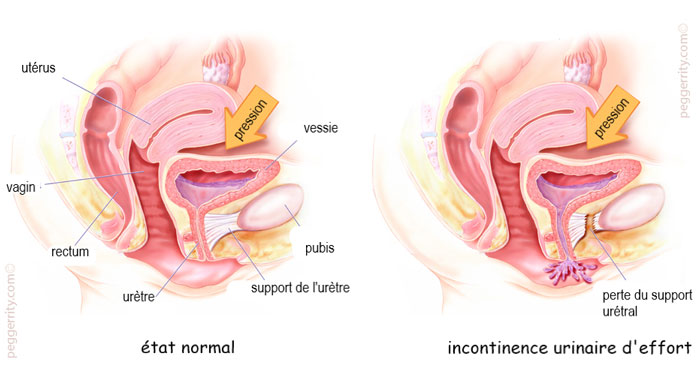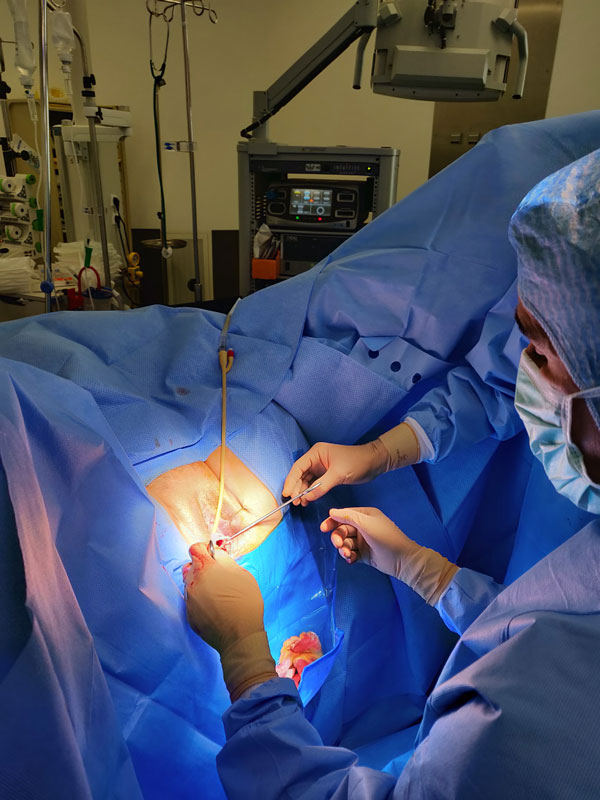Female urinary incontinence
The vaginal sling procedure
Urinary incontinence happens when you lose control of your bladder leading to urine leaks at day or night. About 25% to 45% of women suffer from urinary incontinence and this rate increases with age.
Two types of urinary incontinence exist : stress urinary incontinence and overactive bladder syndrome.

When abdominal pressure increases (in case of activities such as coughing, sneezing, laughing or exercising), pressure on the bladder increases too and some urine leaks can appear if the sphincter is too weak for instance.
These uncontrolled contractions may be accompanied by a rise in the bladder pressure. When the bladder pressure becomes higher than the sphincter's one, the latter (even if it works properly) is not able anymore to contain urine and some leaks start appearing.
The surgery process
In case of a stress urinary incontinence, a surgical solution exists : the vaginal sling procedure. The sling supports the urethra and helps keep it closed — especially when abdominal pressure increases — so that you don’t leak urine.
During the procedure performed under general or spinal anaesthesia, the surgeon makes a small incision inside the vagina to put in place the synthetic tape. TOT (Transobturator Tape Procedure) involves the placement of this piece of mesh around the pubic bones underneath the urethra. The piece of mesh can also be placed behind the pubic bone. In that case we talk about Transvaginal Tape Procedure
The results of these two sling procedures are equivalent. The choice made by the surgeon between the two procedures will depend on the outcomes of the pelvic exam or the urodynamic testing.
The scars in the vagina and pubic area are closed by resorbable sutures.

